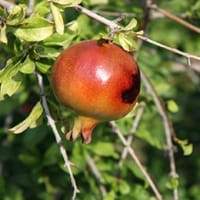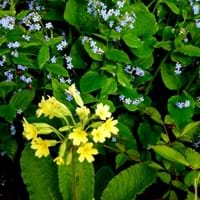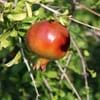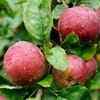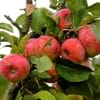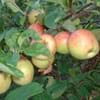Life Span
Perennial
Annual
Type
Fruit
Flowering Plants, Ornamental Plants
Origin
India, Mediterranean
Asia, Europe
Types
Not available
Not Available
Habitat
Subtropical climates, Tropical regions
Old fields, Open grasslands
USDA Hardiness Zone
4-8
5-8
AHS Heat Zone
Not Available
8-1
Sunset Zone
Not Available
1a, 1b, 2a, 2b, 3a, 3b, 4, 5, 6, 7, 8, 9, 10, 11, 12, 13, 14, 15, 16, 17, 18, 19, 20, 21, 22, 23, 24
Habit
Oval or Rounded
Clump-Forming
Flower Color
Deep Red, Red
Yellow
Flower Color Modifier
Bicolor
Bicolor
Fruit Color
Red
Non Fruiting Plant
Leaf Color in Spring
Green
Green
Leaf Color in Summer
Green
Green
Leaf Color in Fall
Green, Light Yellow, Brown
Green
Leaf Color in Winter
Light Green
Light Green
Leaf Shape
oblong or obovate
Oblong
Plant Season
Spring, Fall
Summer
Sunlight
Full Sun, Partial Sun, Partial shade
Full Sun, Partial Sun
Growth Rate
Medium
Medium
Type of Soil
Clay, Loam, Sand
Loam, Sand
The pH of Soil
Acidic, Neutral
Acidic, Neutral, Alkaline
Soil Drainage
Well drained
Well drained
Bloom Time
Early Spring, Spring
Early Summer, Summer, Late Summer
Tolerances
Drought
Variety of soil types
Where to Plant?
Container, Ground
Container, Ground, Pot
How to Plant?
Cuttings, Grafting, Seedlings
Divison, Seedlings, Stem Planting
Plant Maintenance
Medium
Low
Watering Requirements
Average Water Needs, Medium, Needs a lot of water initially
Average Water Needs, Do Not over Water, Never Over-water, Requires regular watering, Water more in summer
In Summer
Lots of watering
Lots of watering
In Spring
Moderate
Moderate
In Winter
Average Water
Average Water
Soil pH
Acidic, Neutral
Acidic, Neutral, Alkaline
Soil Type
Clay, Loam, Sand
Loam, Sand
Soil Drainage Capacity
Well drained
Well drained
Sun Exposure
Full Sun, Partial Sun, Partial shade
Full Sun, Partial Sun
Pruning
Remove damaged leaves, Remove dead branches, Remove dead leaves
Remove damaged leaves, Remove dead branches, Remove dead leaves, Remove dead or diseased plant parts
Fertilizers
All-Purpose Liquid Fertilizer
All-Purpose Liquid Fertilizer, fertilize in growing season
Pests and Diseases
Aphids, Beetles, Gray mold, Mites, Red blotch, Root mealy bugs
Slugs, Snails
Plant Tolerance
Drought
Variety of soil types
Flower Petal Number
Single
Single
Foliage Texture
Medium
Fine
Foliage Sheen
Matte
Matte
Attracts
Aphids, Beetles, Birds, Bugs, Hummingbirds, Not Available
Insects
Allergy
Hives, Itchiness, Stomach pain, Swelling, Throat itching
Abdominal pain, Constipation, Diarrhea, Skin irritation
Aesthetic Uses
Beautification
Beautification, Borders, Landscape Designing, Showy Purposes
Beauty Benefits
Good for skin and hair
Good for skin, Making cosmetics, Stops hair loss
Environmental Uses
Air purification
Air purification, Food for insects, Versatility
Medicinal Uses
anti-cancer, Hair Loss, High blood pressure, Immunity, Indigestion, Regulates Blood Sugar, Skin Disorders
Eczema
Part of Plant Used
Fruits, Leaves, Seeds
Root
Other Uses
Traditional medicine, Used As Food, Used for its medicinal properties, Used to make juice
Decoration Purposes, Medicinal oil, Showy Purposes, Used as Ornamental plant, Used for its medicinal properties
Used As Indoor Plant
Yes
Yes
Used As Outdoor Plant
Yes
Yes
Garden Design
Edible, Fruit / Fruit Tree
Edging, Feature Plant, Groundcover, Mixed Border
Botanical Name
Punica granatum
Primula veris
Common Name
Pomegranate
cowslip, common cowslip, cowslip primrose
In Hindi
अनार
cowslip primrose
In German
Granatapfel
Echte Schlüsselblume
In French
Grenade
Brérelle, le Coqueluchon, le Coucou, l’Herbe à la paralysie, l’Herbe de saint Paul, la Primerolle, la Primevère de printemps ou la Printanière
In Spanish
Granada
Primula veris
In Greek
Ρόδι
πασχαλίτσα primrose
In Portuguese
Romã
prímula cowslip
In Polish
Granat
Pierwiosnek lekarski
In Latin
malogranatum
cowslip Primrose
Phylum
Magnoliophyta
Magnoliophyta
Class
Magnoliopsida
Magnoliopsida
Family
Punicaceae
Onagraceae
Clade
Angiosperms, Eudicots, Rosids
Angiosperms, Eudicots, Rosids
Tribe
Not Available
Onagreae
Subfamily
Punicoideae
Onagroideae
Number of Species
Not Available
Season and Care of Pomegranate and Cowslip Primrose
Season and care of Pomegranate and Cowslip Primrose is important to know. While considering everything about Pomegranate and Cowslip Primrose Care, growing season is an essential factor. Pomegranate season is Spring and Fall and Cowslip Primrose season is Spring and Fall. The type of soil for Pomegranate is Clay, Loam, Sand and for Cowslip Primrose is Loam, Sand while the PH of soil for Pomegranate is Acidic, Neutral and for Cowslip Primrose is Acidic, Neutral, Alkaline.
Pomegranate and Cowslip Primrose Physical Information
Pomegranate and Cowslip Primrose physical information is very important for comparison. Pomegranate height is 370.00 cm and width 460.00 cm whereas Cowslip Primrose height is 25.00 cm and width 50.00 cm. The color specification of Pomegranate and Cowslip Primrose are as follows:
Pomegranate flower color: Deep Red and Red
Pomegranate leaf color: Green
Cowslip Primrose flower color: Yellow
- Cowslip Primrose leaf color: Green
Care of Pomegranate and Cowslip Primrose
Care of Pomegranate and Cowslip Primrose include pruning, fertilizers, watering etc. Pomegranate pruning is done Remove damaged leaves, Remove dead branches and Remove dead leaves and Cowslip Primrose pruning is done Remove damaged leaves, Remove dead branches, Remove dead leaves and Remove dead or diseased plant parts. In summer Pomegranate needs Lots of watering and in winter, it needs Average Water. Whereas, in summer Cowslip Primrose needs Lots of watering and in winter, it needs Average Water.
